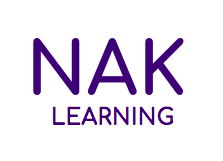Through my research, I have found many approaches to support a learning environment. Whether this learning environment is at the workplace, a conference, training workshops, a school classroom, homeschool settings, and university settings.
1) Ditch The Bell and Salivating Dog
It’s time to settle down with the Behaviourist style of education and integrate aspects of Constructivist/ Humanistic styled learning.
Enough with just the rewards and treats. Add a bit of meaning to the learning setting.
Humans are looking for more than just a reward- they are looking for meaning. So an environment that is caring and supportive of who they are is an environment where they will absorb the most information.
A constructivist environment is “non-threatening, supportive, and encourages mutual respect and acceptance”- Bettina Lankard Brown
The idea is to facilitate learning through experience and social interactions.
Examples of this can be incorporating everyday life experiences and events into the learning environment or bringing the learning to the everyday experiences.
Research states that reflecting on experiences in the learners lives is a major aspect of the learning process.
I hope that eventually, no child will need remedial instruction to succeed in the classroom.
The above exert is from a short blog post by Bill Gates on the topic of a humanist approach to teaching. See below link for the full blog post:
Bill Gates Notes: A humanist approach to teaching kids
2) Ensure learning is available to all in all situations
Try and make the learning more readily available to the learner. Some universities only provide face to face lectures. Students have to attend to be a part of any learning. This is not supportive or helpful for students who learn differently, or can’t attend that day. Having the learning content available in a variety of forms enables all learners access to the learning content.
This is particularly relevant for young learners as well. Some Examples for having access to online resources are; online downloads for lectures, online tutorials, games, audio, etc. You can make learning App friendly, Phone friendly, or tablet friendly.
“The students of the future will demand the learning support that is appropriate for their situation or context… Mobiles will be a key technology to provide that learning support”- Dr Marcus Specht
As many university students transfer to online learning for the first time, some universities have a head start in the e-learning realm. I have been studying online for many years with Charles Sturt University [CSU]. The online system at CSU has been the best I have seen across many universities. I do my readings and attend live interactive lectures via my phone and laptop. I would watch them on the bus to work, or attend a live lecture on my lunch break. The flexibility that my educational experience has offered is phenomenal.
3) Update your methods of educating
In order to create a Digitally effective learning environment, educators must align with new research and trends on how people learn better.
An example that can be used is the Micro-Module approach.
This was based on research I found on how people’s attention spans are lessening more and more as well as research on the typical trends that were happening with free online learning.
Research states that Micro-learning does not overwhelm the audience with information as it is bite-size learning. As we live in a fast-paced world, there is less time available for people to stop and take a chunk out of their time to learn.
With this research in mind try creating training videos that range between 1 – 7 minutes depending on the topic and context of the learning.
4) Apply more of an Andragogy approach than a Pedagogy approach to young adults and adult learners
What is strange is the current gap between the teaching approaches to younger students and adult learners.
Although there are some limitations for a toddler or primary school children in their ability to understand complex information, the teaching approach shouldn’t change drastically because of their age especially between young adults and adult education. personally, I still learn the same way I did when I was in secondary and as an adult.
My approach in secondary (and primary might I add) was: I wanted to know the why and the relevance of what I was learning. Often the teaching method at schools didn’t allow for those questions to be answered. It was simply, learn it and do the work because it is in your exam or in your assessment. There was no explanation on the relevance and applicability to the outside world AND the students’ current world.
There seems to be a gap between the pedagogy and Andragogy practices and this is something that should be explored further. If you haven’t heard of Andragogy, Check this introductory video:
It is relevant now more than ever that the learning environment can vary for each learner. Some kids are being homeschooled, some are learning online and attending school once a week. Some adult learners are having to go online in order to work and support family, and some attend night classes. Regardless of the learning context, the environment should be positive, engaging, relevant, and encouraging to maximise the learning experience.
If you would like access to more educational resources and content please follow us:
🕸 Website: Naklearning.com
🐦 TWITTER: twitter.com/naklearning
📷 INSTA: instagram.com/naklearning
👵🏻 FB: facebook.com/naklearning
▶️ YOUTUBE: youtube.com/channel/UCdHKi_1Dx8kLEao-B24nx7Q
📌 Pinterest: pinterest.com/naklearning



